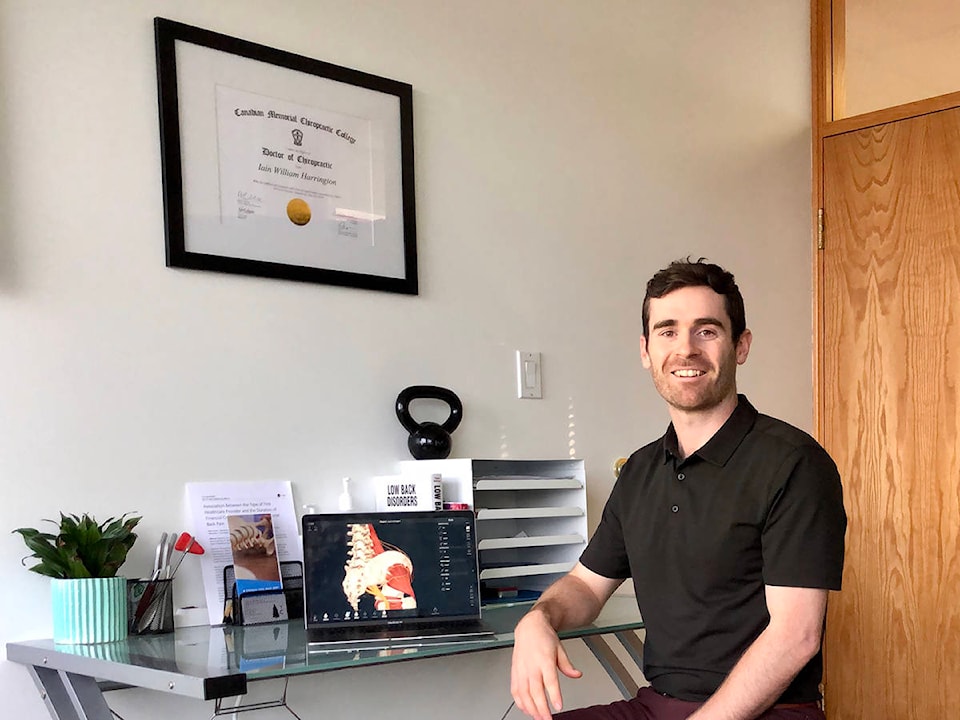Disability due to back pain has increased by more than 50 per cent over the last 25 years and low back pain is now the number one leading cause of disability worldwide. At the same time, the costs of treating people suffering from back pain are surging.
According to Dr. Iain Harrington of the Yellow Cedar Integrated Wellness Clinic, Canada spends between $8 and $12 billion to care for people with spine-related disability every year.
“We’re actually in a spinal pain epidemic in Canada and globally,” Harrington said.
The Campbell River-based Doctor of Chiropractic said one of the problems underlying the epidemic is the prevailing “supermarket approach” to delivering spine care.
“There are dozens of different pharmaceutical products that people can take for back pain,” he said. “There are injections, surgical procedures, and countless health-care professionals who are treating back pain despite not being informed by best practices.
“One patient can see nine practitioners and receive nine different diagnoses for the same problem – it’s a fragmented, inefficient system.”
A standardized pathway in spine care
The solution isn’t necessarily having just one doctor, Harrington said, but having a doctor who is open to communicating with other health-care practitioners who respect clinical guidelines.
At his practice, he provides patient-centered care by listening to his patients, informing them of evidence-based treatment options such as prescribed exercise and manual therapy, and involving them in decision-making.
“If a patient wants to combine chiropractic care with seeing a naturopath for lifestyle management, an acupuncturist or a therapist who can help with psychological factors often associated with spine pain, I’m keen to support that,” he said.
Rather than operating in a “chiropractic silo,” he works to ensure all practitioners involved in his patients’ recovery processes are on the same page. For example, he provides the family physician of every patient he sees with a shared plan of management.
“Communication is massive,” he said, adding that he monitors his patients’ outcomes throughout their entire recovery process.
“Acting as a first contact for people suffering from spine pain ensures a patient-centered, standardized pathway of care from when they enter the health-care system to them recovering.”
Changing how spine care is delivered, he added, can help achieve triple-aim goals of improved care, improve patient outcomes and reduced costs.
To learn more, visit yellowcedarintegrated.com.
